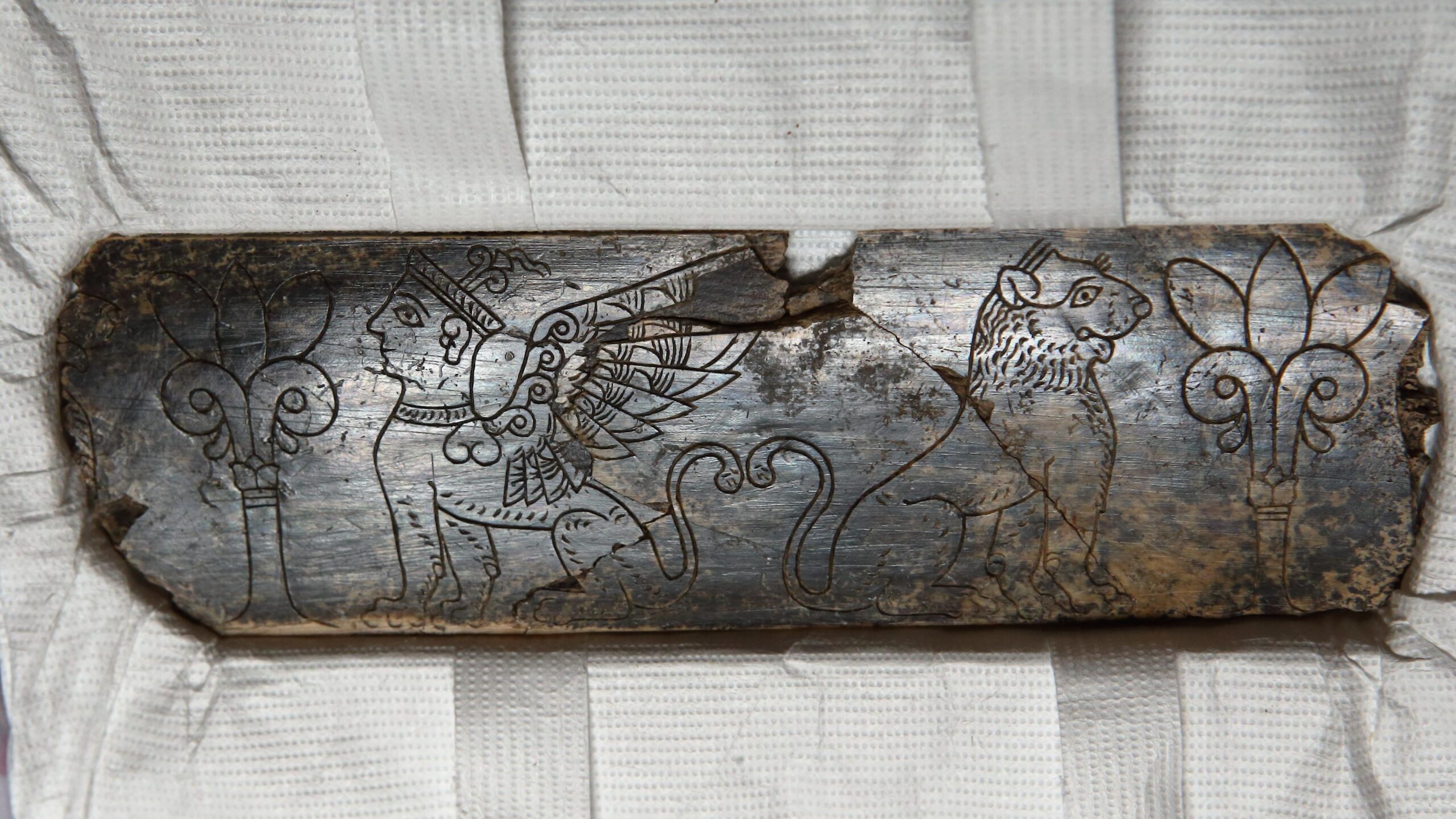An engraved ivory panel from the Iron Age has been discovered in the ancient Hittite capital of Hattusa in modern-day Boğazköy, north-central Turkey. It is around 2,800 years old. The piece of elephant ivory is about a foot long and four inches wide. Carved on the surface are a sphinx and a lion in profile, back-to-back, with two tree of life figures on each end.
Archaeologists believe the ivory piece was likely mounted onto a wooden box or wooden furniture. The left and right sides are jagged and broken, while the top and bottom are smooth. That suggests the piece was originally longer, but the width is still the same.
Hattusa was found around 2000 B.C. and was the capital of the Hittite Empire from 1700 B.C. until it fell in the Bronze Age collapse around 1200 B.C. The ivory panel was unearthed on the northwest slope of the Royal Citadel, seat of the Hittite kings, and while the empire was long gone when the ivory was engraved, its iconography is a callback to Hittite culture. The defensive walls of Hattusa’s Upper City had a Lion Gate, flanked by two monumental lions, and a Sphinx Gate, flanked by two massive winged sphinxes with upright tails. Both portals date to around 1500 B.C.
When the ivory was engraved, Hattusa had only recently become repopulated after it was abandoned when the Hittite Empire fell. A small Phrygian contingent settled there around 800 B.C. There is also archaeological evidence of several cultures in the Iron Age layers of Hattusa. The discovery of so fine an ornament may rewrite the little we know of this period in the city’s history.
Schachner said, “This work is a unique work for Boğazköy. This is the first time we are faced with a work that is so intense and decorated with such a beautifully crafted scene. During the Iron Age, very extensive excavations were carried out in Boğazköy, but such a detailed work was not uncovered. “In terms of both the stage and the iconography and style used, we can better reveal Boğazköy’s relations towards Southeastern Anatolia and its artistic relations towards the Southwest and Greece in its period, that is, in the first millennium BC.”
“If there is such a work, it is possible to say that this place is no longer a small town, but a more important one, perhaps a center of power. Because when we evaluate it with another discovery in previous years, it is possible to say whether it points to a complex social structure or a hierarchical social structure. “Slowly, it is possible for us to obtain better information about the social status of that period.”
After the scientific studies on the work are completed, the ivory work in question will be exhibited at Boğazköy Museum.

‘Elephas maximus asurus’ (the ‘Syrian elephant’), the westernmost population of the Asian elephant, went extinct in ancient times, with early human civilizations in the area utilizing the animals for their ivory.
In other words, lions –as well as elephants– were locally available 🐘️
P.S.: During the Iron Age excavations were carried out? To me, however, the artistry looks not totally different to the classic Hittite one.
There is, by the way, also a ‘Lion Gate’ in Mycenae in Greece, from around 1300BC. The Trojan War seems to have been an argument between Greek and Hittites (Troy referred to as ‘Welusa’).
When was it “discovered”?